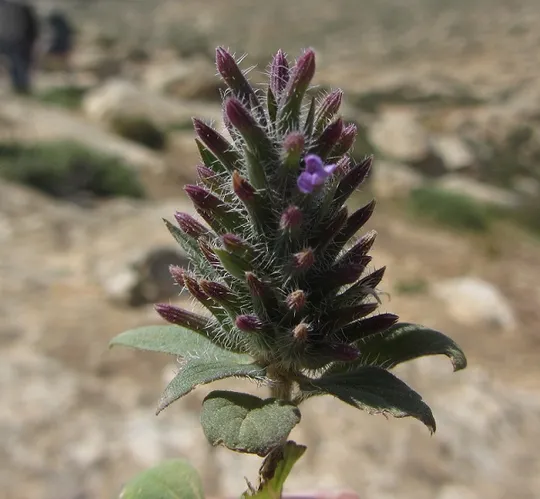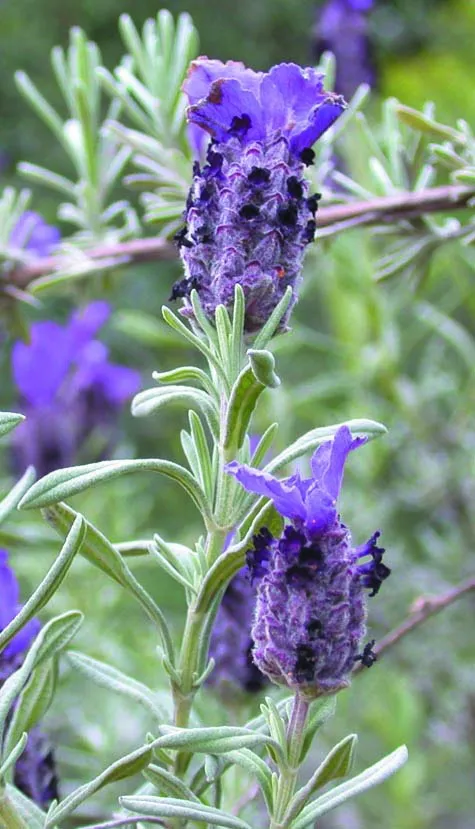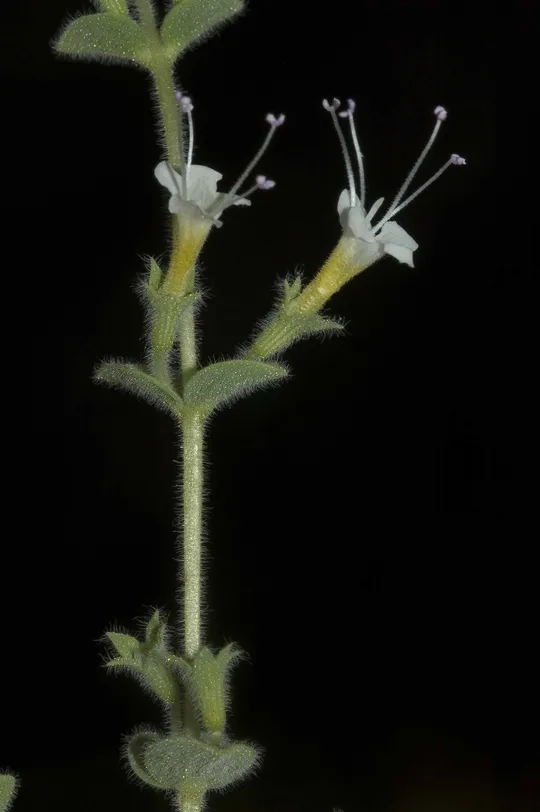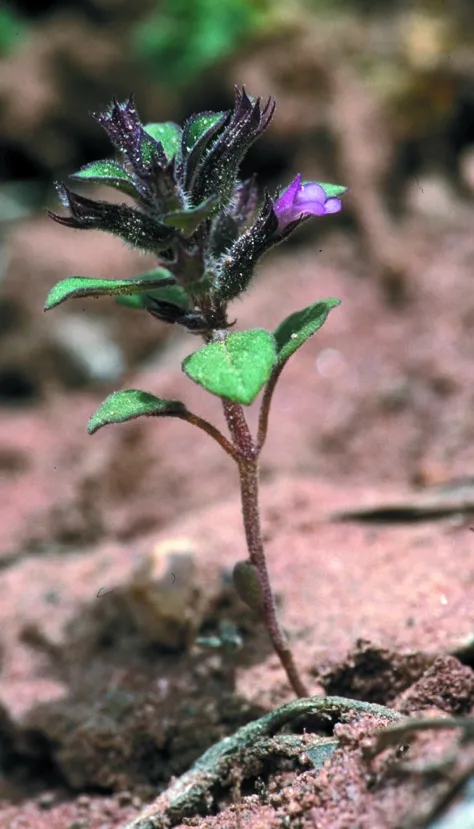Desert Savory
Satureja thymbrifolia
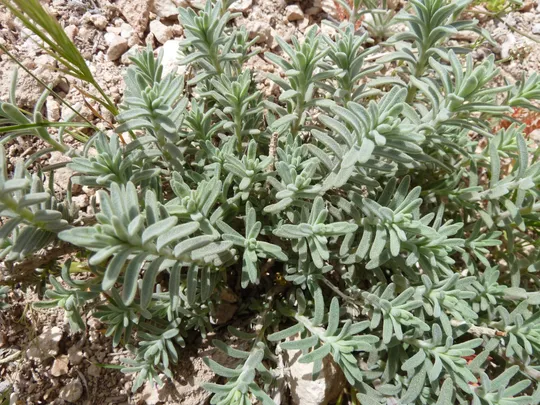

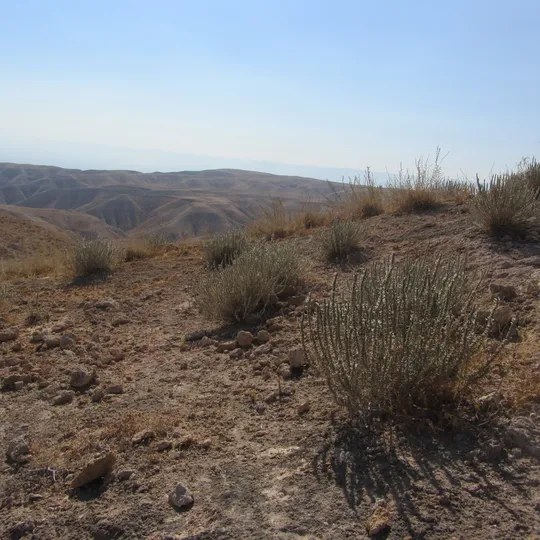
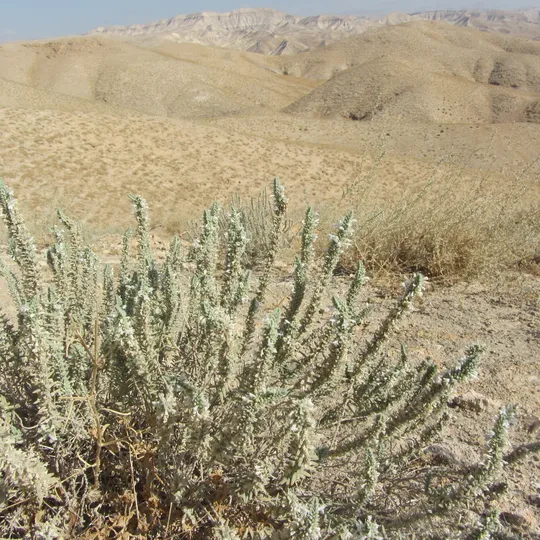
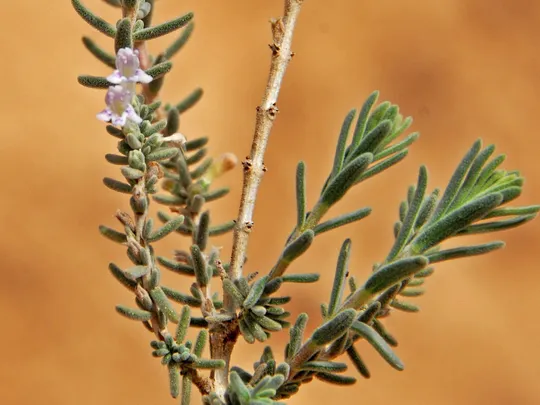
The leaves of Satureja thymbrifolia are
used as salad herbs or as a cooked or roasted food.
Satureja thymbrifolia is found only
in the Judean Desert, at three sites in the Horkanye-Nabi Musa area, and there are an estimated four
sites in the country. The species was collected in this area several times between
the 1930s and 1990s. The single collection from Metsoke Dragot in 1947 is probably
a result of seeds carried away by floods in Wadil Dragot, which germinated, but
did not become established and form a sustainable population, as can be seen occasionally
in other species as well. The currently known sites are el Mird Hills (Horkanye slopes) from where the species
was first described, the Buqueya near Horkanye and Jebel Harmon, 5 km south of Nabi Musa (Danin
& Hedge 1986).
According to Feinbrun in the Flora Palaestina (1986), S. thymbrifolia
also grows in Edom in southern Jordan, although Danin in a new work considered the
specimens collected by Eig, Zohary and Feinbrun in Edom a new species – S. nabateorum
(Danin & Hedge 1986).
According to Danin, the plant grows only on the Hatrurim
geological formation in the northern Judean Desert. This formation composed of
a mosaic of silicate limestone and chalk is rich in unique trace minerals in very
dry desert conditions. S. thymbrifolia creates a
dwarf-shrub steppe-like formation together with Salsola vermiculata.
Satureja
thymbrifolia belongs to an isolated ancient group in the genus Satureja (section Bachtiarica).
Originally only one species, S.bachtiarica,
was described in this section, from the arid southern Iran Mountains. However, following
the work of Israeli scientists, two new species to science from this group were
described from the Levant – S.
thymbrifolia in the Judean Desert and S.nabateorum from Edom (Danin and Hedge,
1998). These species of Satureja indicate the survival of ancient
groups in the desert mountains (Stebbins 1954) and their speciation to endemic
species in isolated mountains. Trichodesma boissieri, which is endemic
to the Dead Sea Rift area and Daphne linearifolia endemic to Edom, whose
close species grow in the mountains of southern Iran, also belong to such a
species section. . Many of the relict species in Desert Mountains have species-rich
vicarious groups in the northern Fertile Crescent Mountains. The species in
this group (section Bachtiarica) have no such
close species.
·
Satureja
thymbrifolia is one of Israel's rarest plants,
growing on only three sites in one region – the Judean Desert. According to
available data, its presence in the Judean Desert has been stable over the
years.
·
Army training in
the area and overgrazing are the main factors threatening the continued
existence of S. thymbrifolia. The plants are
exposed to random extinction due to the small number of sites and the small number
of plants growing on every site. There is no demographic information available regarding
S.
thymbrifolia lifespan, reproductive biology and its ability to renew
populations from seeds.
·
In Israel, S.
thymbrifolia is not protected in nature reserves.
·
The species is endemic
to Israel and its local threat level is equivalent to its global one.
The known Satureja thymbrifolia populations should be monitored and the population size assessments,
spatial dispersion and demographics should be updated. The taxonomy and
paleo-genetics of S. nabateorum populations in Edom and in the Jabal Ram area and the S.
thymbrifolia populations in the Judean Desert should be
studied. Seeds should be collected and grown in refuge gardens, for use in arid
gardening in the Negev and the Judean Desert.
Satureja thymbrifolia is endemic to
Israel.
Satureja thymbrifolia is a rare
desert shrub that grows on a number of small sites in only one region, the
Judean Desert. The species is endemic to Israel, and its local
threat level is equivalent to its global one.
Danin, A. and Hedge, I.C., 1998. Contributions to the flora of Jordan 2. A new species of Satureja (Labiatae) and some new records. Willdenowia 28: 135-142.
Current Occupancy Map
| 1000 squre meter pixel | 5000 squre meter pixel | 10000 squre meter pixel | |
|---|---|---|---|
| number of observations | 0 | 0 | 0 |
| in total pixels | 0 | 0 | 0 |
| Family | Lamiaceae |
| Classification | On the endangered species list |
| Ecosystem | Desert |
| Chorotype | Western Irano – Turanian – Eastern Saharo - Arab |
| Conservation Site | Horkanye (Hyrcania, Khirbed el-Mird) in the Judean Desert |
| Rarity |
1
3
6
|
|---|---|
| Vulnerability |
0
1
4
|
| Attractiveness |
0
0
4
|
| Endemism |
0
4
4
|
| Red number |
1
4.2
10
|
| Peripherality | 0 |
| IUCN category | DD EW EX LC CR EN VU NT |
| Threat Definition according to the red book | Endangered |
 Based on:
Based on:
